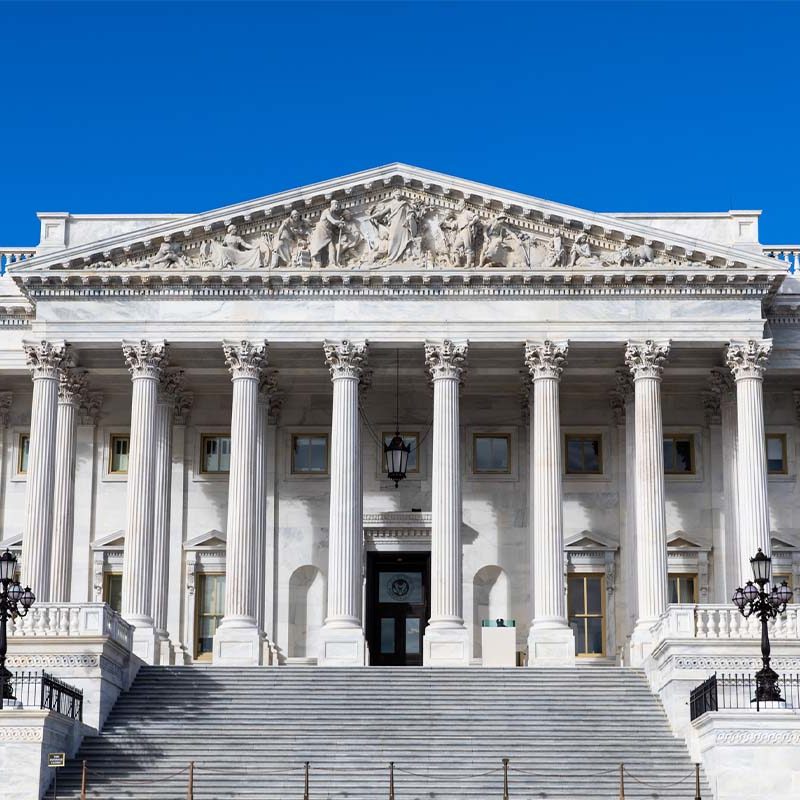30+ organizations call on President Biden and the Senate to Fill Every Seat
“At the current pace, dozens of these vacancies will remain unfilled at the end of the year, and we urge you to do whatever it takes to fill them all.”
How President Biden and Senate Democrats can Fill Every Seat
Demand Justice Chief Counsel Christopher Kang has written a memo outlining the steps that Democrats must take to avoid leaving 60+ judicial vacancies open at the end of the year.
More nominations
Last week, President Biden picked up the pace of nominations, shattering his previous record for the most lifetime judicial nominations in a single week. But there are still dozens of vacancies without nominees, and the White House should take a more assertive approach with Senators of both parties and show it is willing to bypass Senate tradition if senators are not proving good partners.
More hearings and more nominees at each hearing
As President Biden increases the pace of his nominations, the Senate Judiciary Committee must increase the pace at which it processes nominees. Before being confirmed, each judicial nominee must appear before the Committee for a hearing. As a result, the number of hearings scheduled and the number of nominees who can appear at each hearing are probably the most important factors in determining how many nominees will be confirmed before the end of this Congress.
Under the usual approach, the Committee holds one nomination hearing every two weeks the Senate is in session. With the currently planned Senate schedule, this means there will be only 5 more nominations hearings this year, which would allow the Committee to process nominees for fewer than half of the 120 announced vacancies. That is not an acceptable outcome.
Senate Democrats could add more hearings by taking a page from Republicans and canceling recess or even scheduling hearings while the Senate is in recess. In 2018, Republicans convened the Senate in August, canceling part of the typical recess, and held a hearing for six judicial nominees. That October, Republicans even held two hearings when the Senate was in recess.
As necessary, Democrats should also follow the Republican precedent of holding hearings in consecutive weeks. In October 2018, Republicans held three hearings in three consecutive weeks for 16 judicial nominees. Democrats should stop playing by a different set of rules when they are in power and embrace this approach.
It will not be enough for Democrats to add a few extra hearings to schedule; they also must increase the number of nominations considered at each hearing.
When Republicans are in power, they bend the rules on how many nominees can be processed at a single hearing so they can confirm more judges. During the Obama administration, Republicans insisted on the Committee considering only a single circuit court nominee and no more than five total nominees at each hearing. In the entire Obama presidency, the Judiciary Committee only held three hearings with two circuit court nominees and only seven hearings with more than five nominees. During the Trump administration, Republicans shattered both of these norms to move Trump nominations through more quickly. In four years, they held 13 hearings with two circuit court nominees and 11 hearings with six or more nominees.
If Republicans could add nominees to the typical hearing slate, Democrats can too – and they must, to address the backlog of judicial vacancies.
More floor time
Assuming Democrats can begin processing more nominees more quickly out of the Judiciary Committee, they must continue to prioritize those nominees on the Senate floor, to ensure all of them get confirmed.
The cost of inaction
History makes clear what awaits President Biden’s judicial nominees if Republicans retake control of the Senate. In 2015-16, when Senate Republicans controlled the Senate at the end of the Obama administration, they confirmed only 22 lifetime federal judges – the fewest since President Truman in 1952. In fact, they confirmed only two circuit court judges – the fewest since the 1800s.

